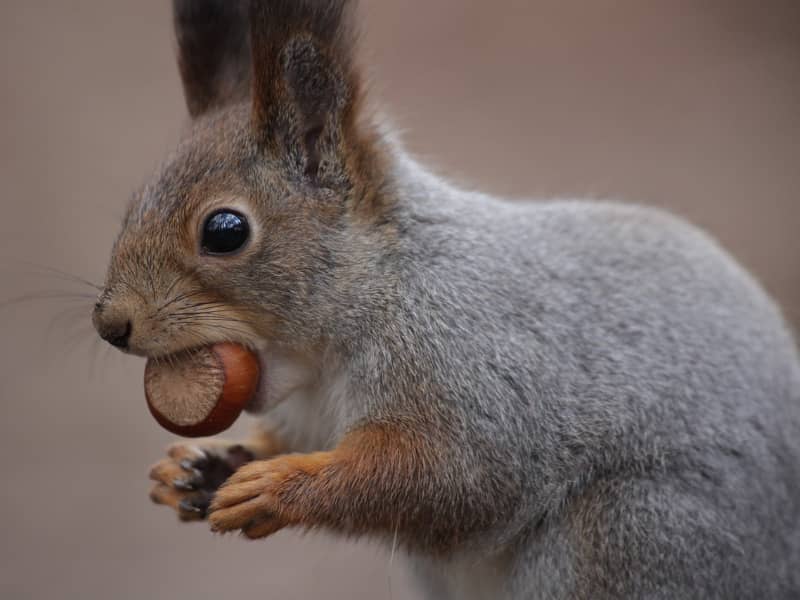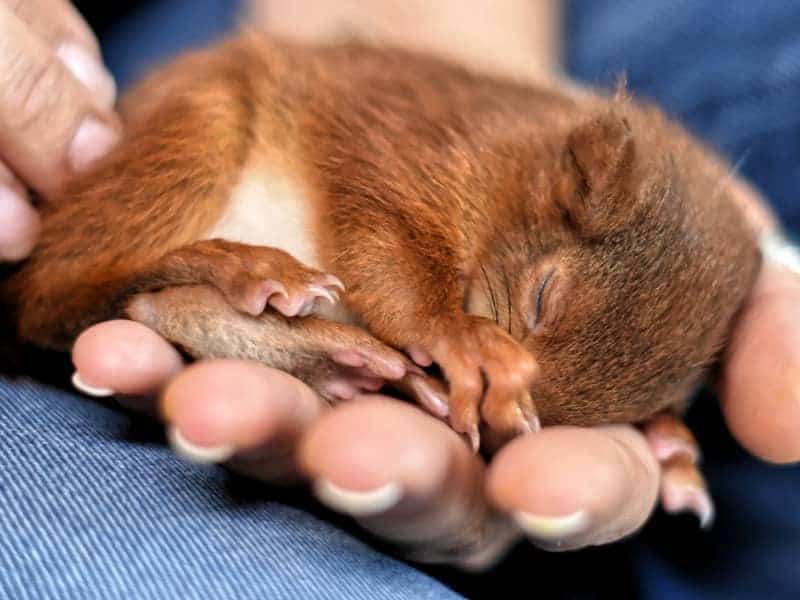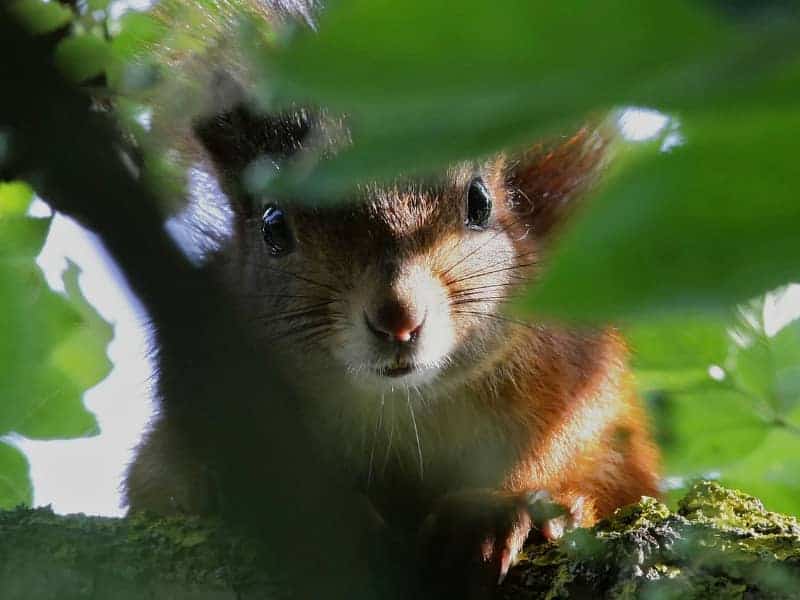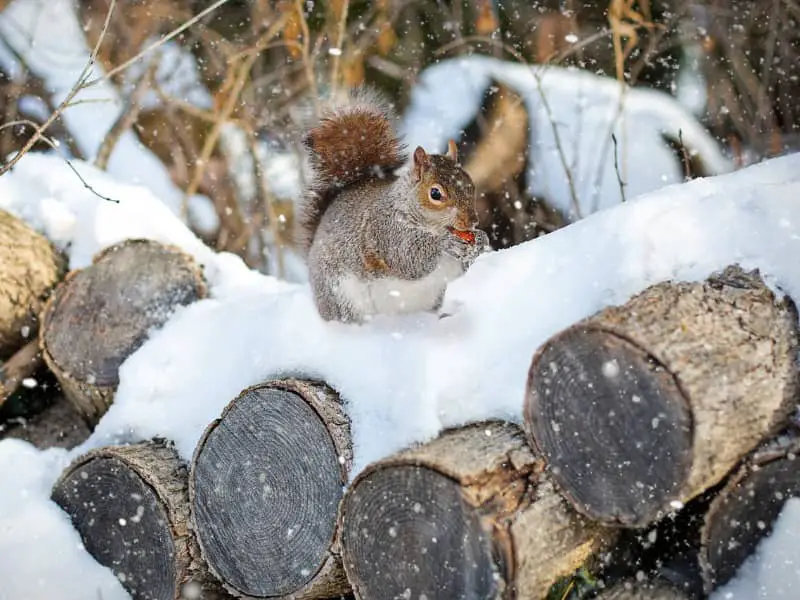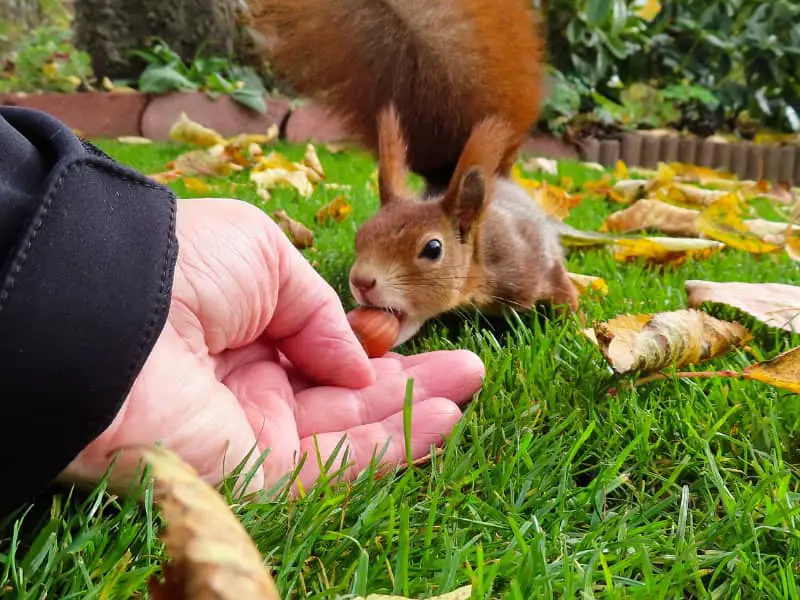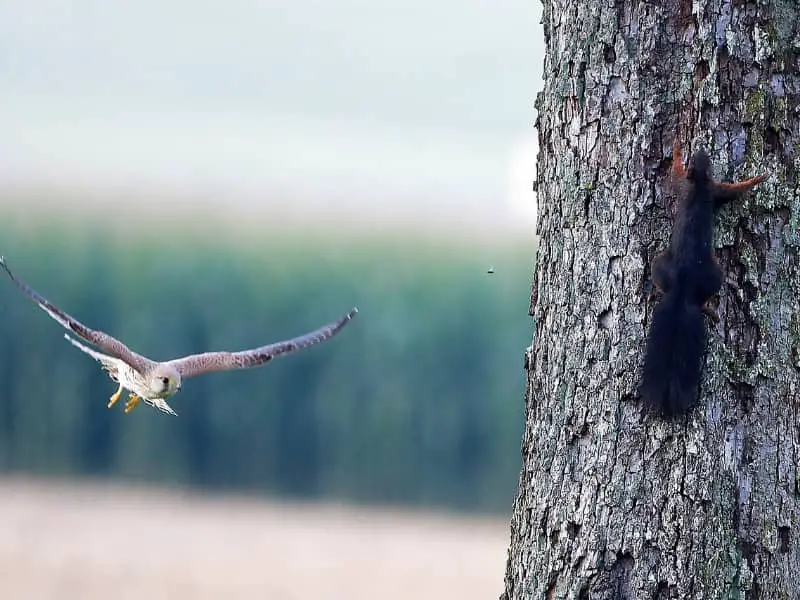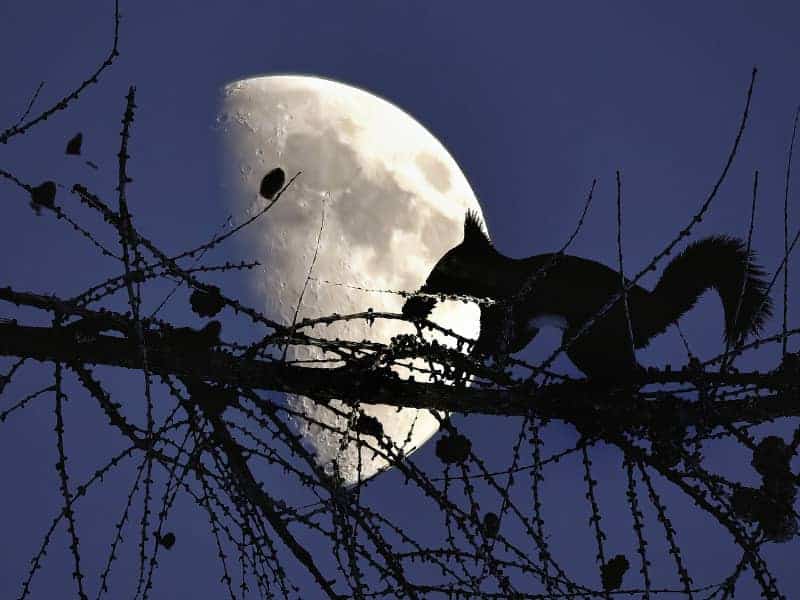
The squirrel precinct
The squirrel territory in the true sense does not exist. The animals live individually. Exceptions are mothers with their young or occasionally associations of a few animals. Thus, the squirrel does not have a fixed territory.
Is the garden considered squirrel territory?
It is easy to suspect that gardens are a kind of squirrel territory. After all, the rodents keep coming back. However, this has nothing to do with a territory, but much more with habit. The clever squirrel notices very quickly that it always gets food from you in your garden or on the balcony. This is used immediately and the food is fetched regularly.
How big is an action area for squirrels?
Various studies have shown that the action area of squirrels can be variably designed. The size often depends on the type of forest, food availability and sex of the animals.
- Deciduous forest - 0.5 to 6.4 ha
- Mixed forest - 4.4 to 17.6 ha
- Coniferous forest - 2.8 to 121.6 ha
The mentioned sizes are amazing, if you consider how small the squirrel is. But it is also very nimble and does not roam the entire territory every day.
During reproduction, males have a larger territory. Sexually mature females are aggressive towards other females.
Furthermore, the squirrel is also always along its known environment to explore foreign regions.
It is amazing that squirrels may well travel several kilometers per day in search of food and also return to their Kobel find
What does Kulturfolger mean?
Squirrels always adapt their habitat to the conditions. Especially in cities you will find this out very easily.
Normally, the squirrel moves freely in its habitat. However, if it discovers places where it permanently finds food, then it will return there again and again. This can be a park with trees or your garden or balcony. Experts call the squirrel a cultural follower (hemerophile), because it adapts its living conditions to the proximity of human settlements. This means nothing other than that the rodent follows humans into their cultural landscape.
The opposite here is the culture fugitive. These are animals that deliberately avoid the proximity of humans. A very good example is the black stork, which you will never find near humans.
When is the kobel divided?
At best, the squirrel shares its hutch in the mating season and in the period of the Breeding young animals. Otherwise squirrels live alone. Only rarely will you find a group that has nothing to do with the exceptions mentioned. Especially in winter it can happen that at least two squirrels can be found in one hutch. The animals warm themselves then at each other.
Does the squirrel have a territorial behavior?
Basically, there is no distinct territorial behavior in squirrels. The animals tolerate it quite, if another squirrel roams through their territory. However, the other animal should not make the mistake of building its own hutch in the immediate vicinity.
How does the squirrel mark its area?
The diurnal animals are solitary. They have scent glands on their paws. With this they can mark their area and thus tell other rodents that a squirrel already lives here.
Author

-
Garden animal - A life with nature
Welcome to my animal blog! My name is Dirk and I am happy to take you on my journey through the fascinating world of animals and gardening.
Born 54 years ago, I have had an insatiable curiosity for the animal world around me since childhood. Although I have moved professionally in other industries, my true passion has always been animals and nature. It is remarkable how a small garden has become such an important part of my life.
Many of my fondest memories are associated with the animals that share our home. Whether it's the curious squirrels that scurry across the trees in the morning, the colorful variety of birds that visit our feeders, or the busy bees and butterflies that pollinate our flowers, every moment with them is invaluable to me.
This blog is my contribution to share my experiences, discoveries and insights with like-minded people. Here I will share stories of unforgettable encounters with animals, give tips on gardening and creating wildlife-friendly habitats, and take you on my journeys through nature.
Thank you so much for being here!
Cordial,
Dirk aka garden animal
Last posts
- 27. February 2024PetsVeganes Hundefutter – Grün und Gesund?
- 18. January 2024ChickensOregano für Hühner
- November 27, 2023HamsterDiurnal hamsters
- November 24, 2023HamsterHamster hammock

